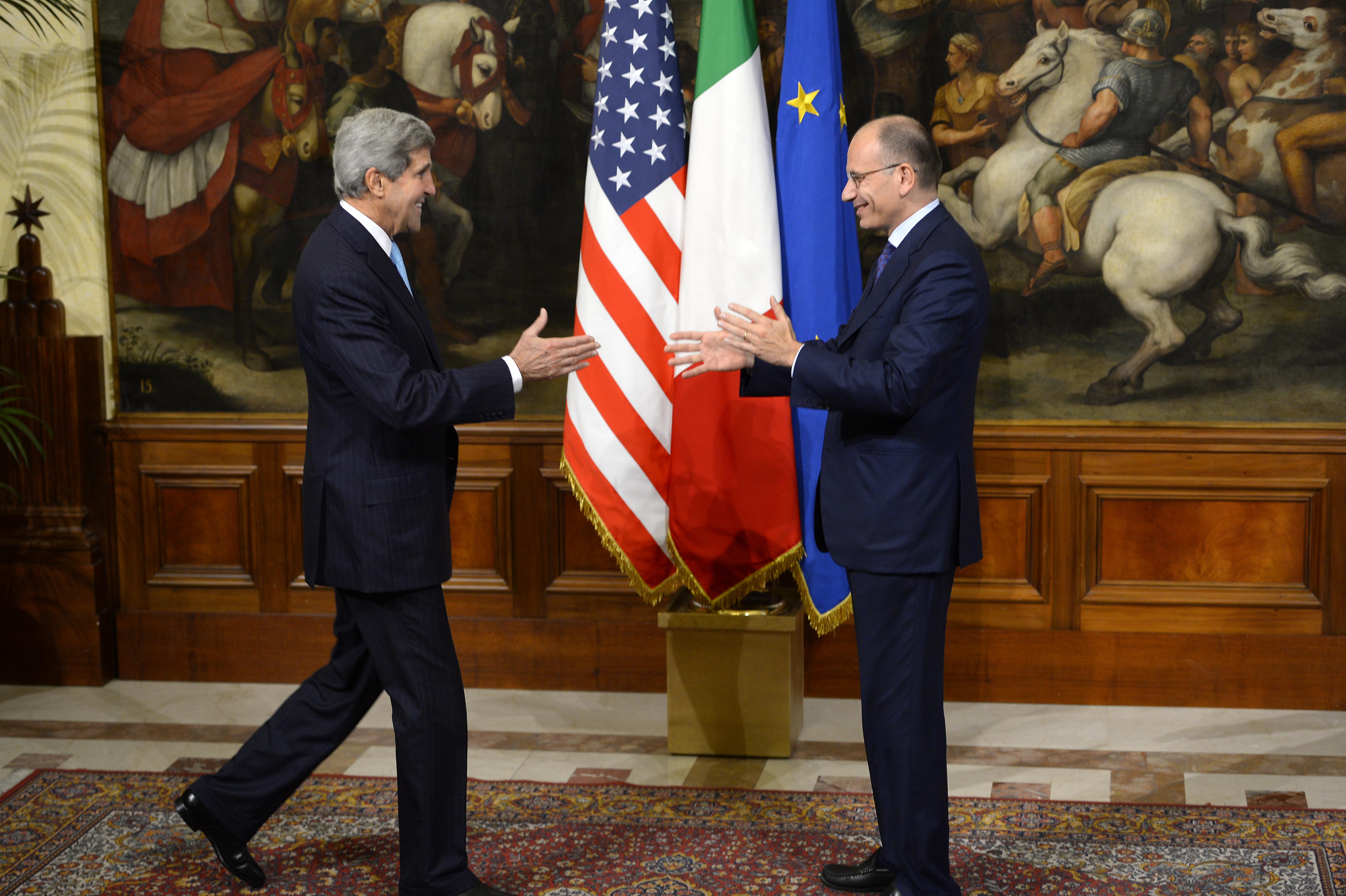It seems like a bit of a paradox that the last four secretaries of state—who all served during a period of improving instantaneous international communication and increasingly reliable and high-quality video-conferencing—were the most traveled, racking up thousands of miles on the road and dozens of countries visited. Current Secretary of State John Kerry seems well on his way to joining them. Why—in an age when the president can simply call up Hamid Karzai onscreen—does his secretary of state need to travel regularly to Kabul?
There is certainly a school of thought that travel like what we saw during Hillary Clinton’s record-breaking tenure is unnecessary. Veteran diplomat George Kennan felt that international trips by the secretary should be “held to a minimum and not indulged in when suitable alternatives are available.” Colin Powell cited this advice approvingly, though he still ended up visiting 89 countries as secretary. The secretary of state and the president rarely traveled abroad until the 20th century and rarely until after World War II. So why send our senior officials out of the country—apparently risking break-in in the process—when they can just pick up the phone?
In an interesting recent paper for the journal International Organization, Fordham political scientist Marcus Holmes suggests the answer lies not in international relations theory or even psychology, but in neuroscientists’ recent research into “mirror neurons,” the parts of the brain that seem to activate when we imitate each other:
In a face-to-face interaction the brains of individuals are actively simulating what is going on in each partner’s head. The ability to mirror brain activity creates what some have termed a shared circuit or “brain-to-brain coupling,” connection between people. The shared connection serves a number of purposes. First, mirror neurons are heavily implicated in empathy, the ability to understand what it is like to be someone else and feel what they are feeling. Neuroscientists and philosophers of science have argued that these neurons provide the physical apparatus required for intersubjectivity and are involved in a key component of it, specific intention understanding. The shared neural connection, while not fail proof, allows individuals to better understand what the other intends to do, how they intend to act, and whether they are being truthful with respect to their intentions under certain conditions….
Holmes argues that the mirroring involved in face-to-face interactions can help diplomats and political leaders better understand each other’s intentions. Take Margaret Thatcher’s famous remark about her first meeting with Mikhael Gorbachev, “I like Mr. Gorbachev. We can do business together.” Homes cites similarly productive meetings held between Soviet and U.S. military leaders during this period as creating the foundation for relative peace in Europe during the final days of the Soviet Union.
Of course, empathy between heads of state can be misleading. History won’t remember George W. Bush’s assurances that when he first met Vladimir Putin, he “looked the man in the eye” and “was able to get a sense of his soul” quite as well.
Whether it’s due to neurons or simple trust building, leaders clearly feel that communication carried out face to face carries more weight than conversations across oceans and time zones. But as always, there’s a danger of getting a little too empathetic.
